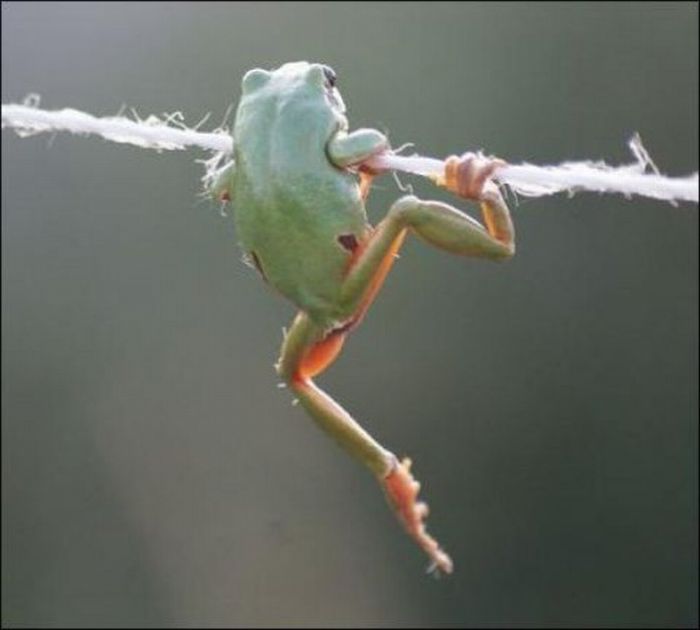|
|
Frog On A String
|
Frogs are generally recognized as exceptional jumpers, and the best jumper of all vertebrates. The Australian rocket frog, Litoria nasuta, can leap over 50 times its body length (5.5 cm), resulting in jumps of over 2 meters. The acceleration of the jump may be up to twice gravity. There are tremendous differences between species in jumping capability, but within a species, jump distance increases with increasing size, but relative jumping distance (body-lengths jumped) decreases.
While frog species can use a variety of locomotor modes (running, walking, gliding, swimming, and climbing), more are either proficient at jumping or descended from ancestors who were, with much of the musculo-skeletal morphology modified for this purpose. The tibia, fibula and tarsals have been fused into a single, strong bone, as have the radius and ulna in the forelimbs (which must absorb the impact of landing). The metatarsals have become elongated to add to the leg length and allow the frog to push against the ground for longer during a jump. The illium has elongated and formed a mobile joint with the sacrum which, in specialist jumpers such as Ranids or Hylids, functions as an additional limb joint to further power the leaps. This elongation of the limbs results in the frog being able to apply force to the ground for longer during a jump, which in turn results in a longer, faster jump.
The muscular system has been similarly modified. The hind limbs of the ancestor of frogs presumably contained pairs of muscles which would act in opposition (one muscle to flex the knee, a different muscle to extend it), as is seen in most other limbed animals. However, in modern frogs, almost all muscles have been modified to contribute to the action of jumping, with only a few small muscles remaining to bring the limb back to the starting position and maintain posture. The muscles have also been greatly enlarged, with the muscles involved in jumping accounting for over 17% of the total mass of the frog.
In some extremely capable jumpers, such as the cuban tree frog, the peak power exerted during a jump can exceed what muscle is capable of producing. Currently, it is hypothesized that frogs are storing muscular energy by stretching their tendons like springs, then triggering the release all at once, allowing the frog to increase the energy of its jump beyond the limits of muscle-powered acceleration. A similar mechanism has already been documented in locusts and grasshoppers.
|
|









